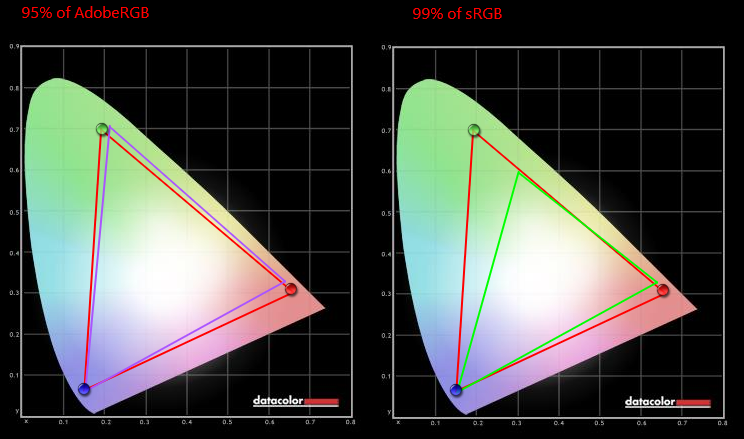We reported on the Philips E-line 27″ 276E6 monitor at IFA last year. The monitor is unusual in that it uses QD Vision’s Color IQ quantum dot technology to give a wide colour gamut. That in itself is not newsworthy, but the Philips monitor costs just €235 plus tax from online retailers and that’s a very low price for a monitor with wide colour gamut. It’s low enough to potentially be a game changer. QD Vision kindly arranged for me to get hold of a unit for evaluation.

The monitor is quite slim and looks quite good, with a slim and light stand. However, one of the first challenges that I had was that the controls are really horrible. They are touch sensitive, but with no tactile feedback and tucked away below the bottom corner so that unless I almost stuck my head down on my desk, I couldn’t read the logos that showed what they do. The OSD is not desperately intuitive (but few are). It’s a long term frustration to me that so many monitors are so difficult to control, when they are connected to a sophisticated computer and highly developed user interface! Anyway, the monitor has quite a good quality IPS panel and the colours looked quite good.
I struggled to get my calibrator to work properly, until I found out that the calibrator that I had (which I have had for several years more than I realised) did not work properly with LED backlights, so it was time to get up to date with my calibrator. I hadn’t used it for some time as the high quality monitor that I use from day to day has a very good sRGB mode that is accurate enough for most of what I do.
Once I had received the delivery of the new calibrator, I was able to get the monitor properly calibrated. This showed that the monitor got close (around 95%) of the way to AdobeRGB coverage. It was also just short of sRGB, because of a slight difference in the red between the colour channels). The white point seemed to be not too accurate and we measured it, when set at 6500 to be between 7200 and 7400, depending on the brightness settings.

However, the biggest problem was that there was an area several centimetres wide on the left hand side of the screen that was quite down in brightness and slightly blue – so the QDs in red and green were not really having the full effect, it seemed. The area was over 20% less bright than the centre when we set the monitor close to the recommended calibration brightness of 200cd/m².
In looking at calibration images, the wider colour gamut in red and green with more saturated colours was apparent, compared to the sRGB IPS panel monitor that I use on a day to day basis. That was a positive result of the use of the QDs.
Analyst Comment
In the end, I was not quite sure who the monitor is aimed at. For most “productivity” users, the use of a bright IPS panel was quite good (although not having used a 27″ FullHD monitor before, and not having used anything that low resolution except on a notebook for many years, the low pixel count was horrendous to me). However the poor colour point and the drop away in brightness really made it hard to recommend for anyone that really cares about colour. The monitor also lacked an sRGB or Rec. 709 mode. However, maybe a very budget challenged digital photographer might find it useful and appealing, although, again, the big pixels would be a big disadvantage to me.
In the brief tests I did, the monitor seemed to be quite fast in response time, with little visible smearing at 60Hz. That might mean that the monitor would be good for a gamer that liked good colour performance, but is less concerned about accuracy. (BR)

